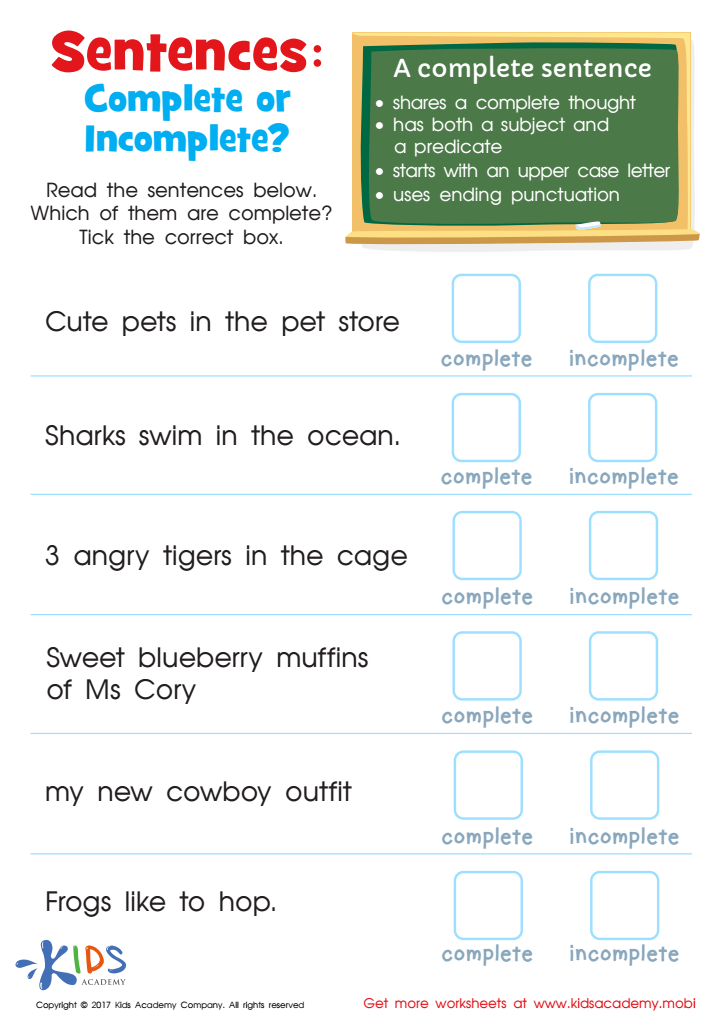Sequence ordering Worksheets for Kids
1 filtered results
-
From - To


Sentences: Complete or Incomplete Worksheet
Question/Answer
What are some effective activities to train students’ Sequence ordering skill when teaching them about Grammar?
Effective activities for training students in sequence ordering for grammar include sentence scrambling, where students rearrange words or phrases to form correct sentences; sequencing events, where they order sentences to narrate a story or process; timeline creation, to organize information chronologically; and fill-in-the-blank exercises, where students choose the correct word or phrase to complete a sequence in sentences or paragraphs.
What does the Sequence ordering skill mean when it comes to Grade 1 Grammar learning?
The Sequence ordering skill in Grade 1 Grammar learning involves the ability of students to recognize and organize sentences or parts of a story in a logical order. It helps young learners understand the beginning, middle, and end of simple narratives, fostering their comprehension and storytelling skills, essential for reading, writing, and effective communication.
Why is the Sequence ordering skill important for Grade 1 students?
The sequence ordering skill is crucial for Grade 1 students as it lays the foundation for understanding chronological order, patterns, and organization. This skill helps in developing reading comprehension, mathematical concepts, and the ability to follow and give directions. It also enhances critical thinking and problem-solving abilities, essential for academic success and daily life activities.
 Assign to the classroom
Assign to the classroom












